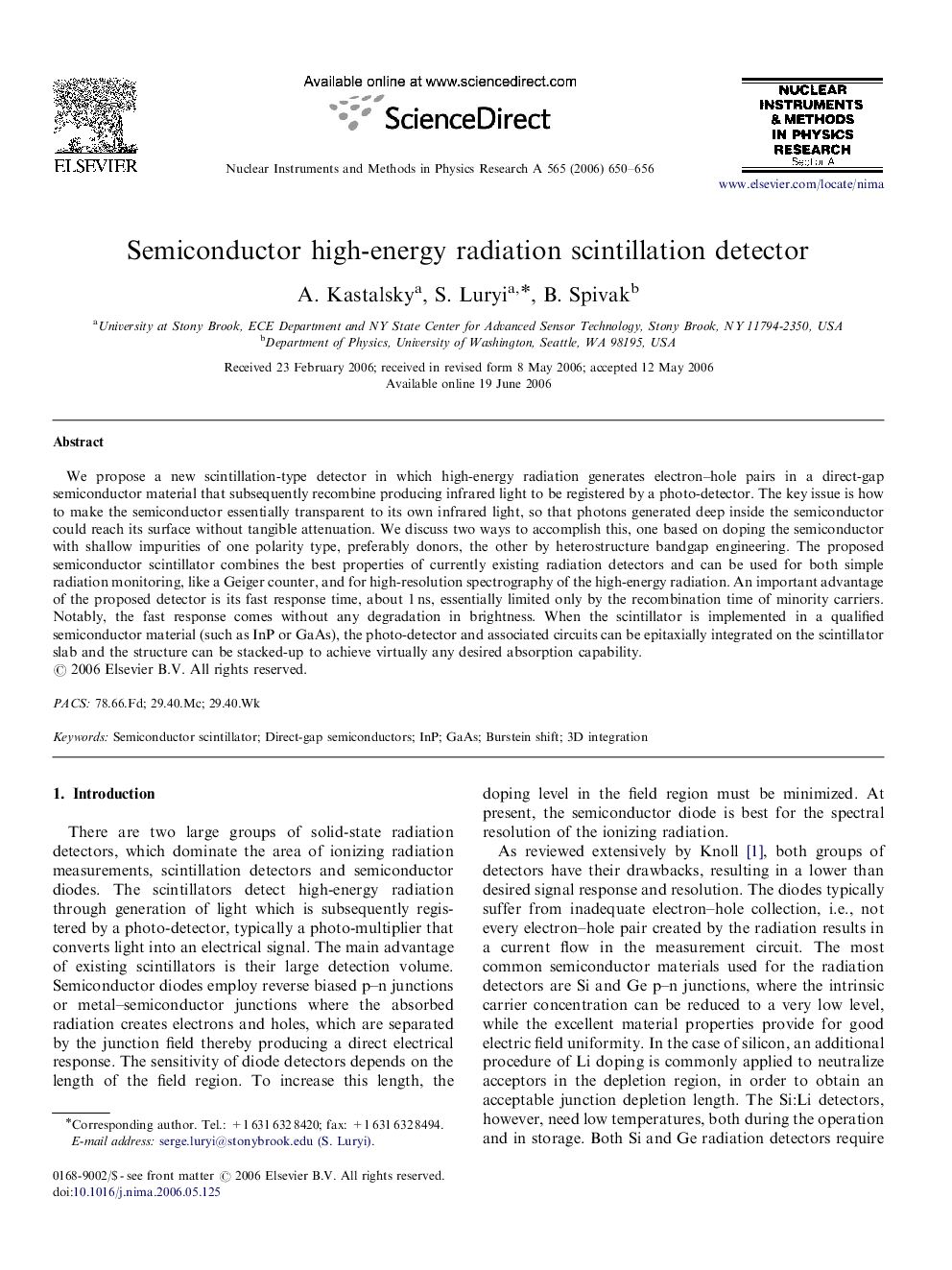| Article ID | Journal | Published Year | Pages | File Type |
|---|---|---|---|---|
| 1832556 | Nuclear Instruments and Methods in Physics Research Section A: Accelerators, Spectrometers, Detectors and Associated Equipment | 2006 | 7 Pages |
We propose a new scintillation-type detector in which high-energy radiation generates electron–hole pairs in a direct-gap semiconductor material that subsequently recombine producing infrared light to be registered by a photo-detector. The key issue is how to make the semiconductor essentially transparent to its own infrared light, so that photons generated deep inside the semiconductor could reach its surface without tangible attenuation. We discuss two ways to accomplish this, one based on doping the semiconductor with shallow impurities of one polarity type, preferably donors, the other by heterostructure bandgap engineering. The proposed semiconductor scintillator combines the best properties of currently existing radiation detectors and can be used for both simple radiation monitoring, like a Geiger counter, and for high-resolution spectrography of the high-energy radiation. An important advantage of the proposed detector is its fast response time, about 1 ns, essentially limited only by the recombination time of minority carriers. Notably, the fast response comes without any degradation in brightness. When the scintillator is implemented in a qualified semiconductor material (such as InP or GaAs), the photo-detector and associated circuits can be epitaxially integrated on the scintillator slab and the structure can be stacked-up to achieve virtually any desired absorption capability.
